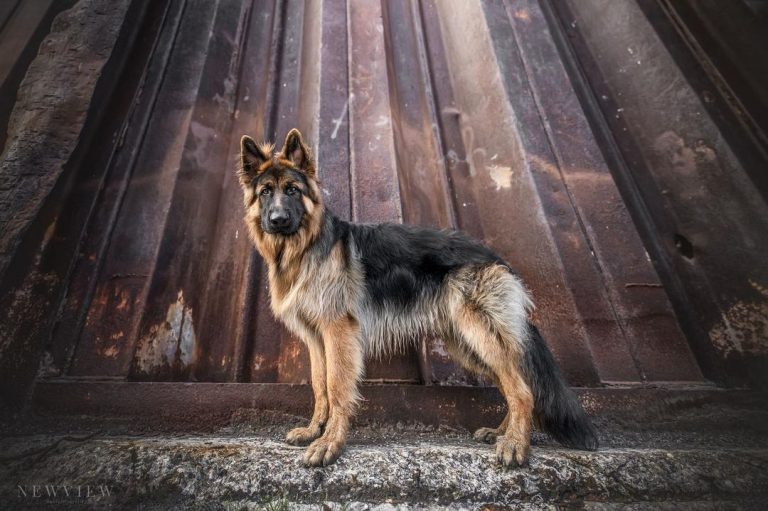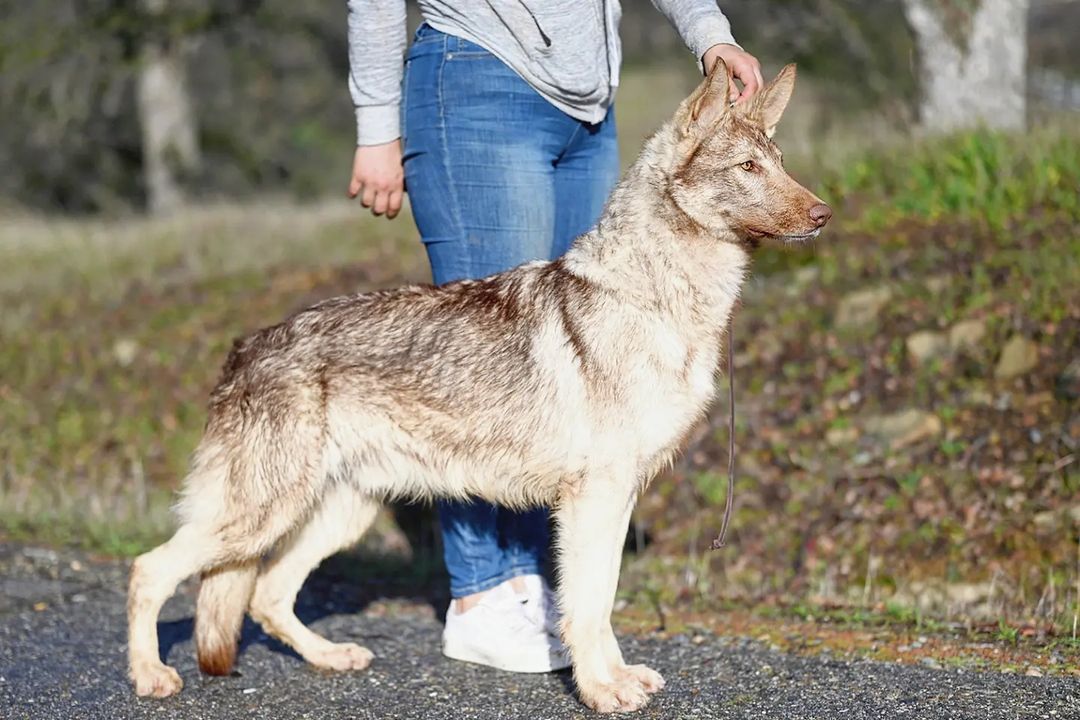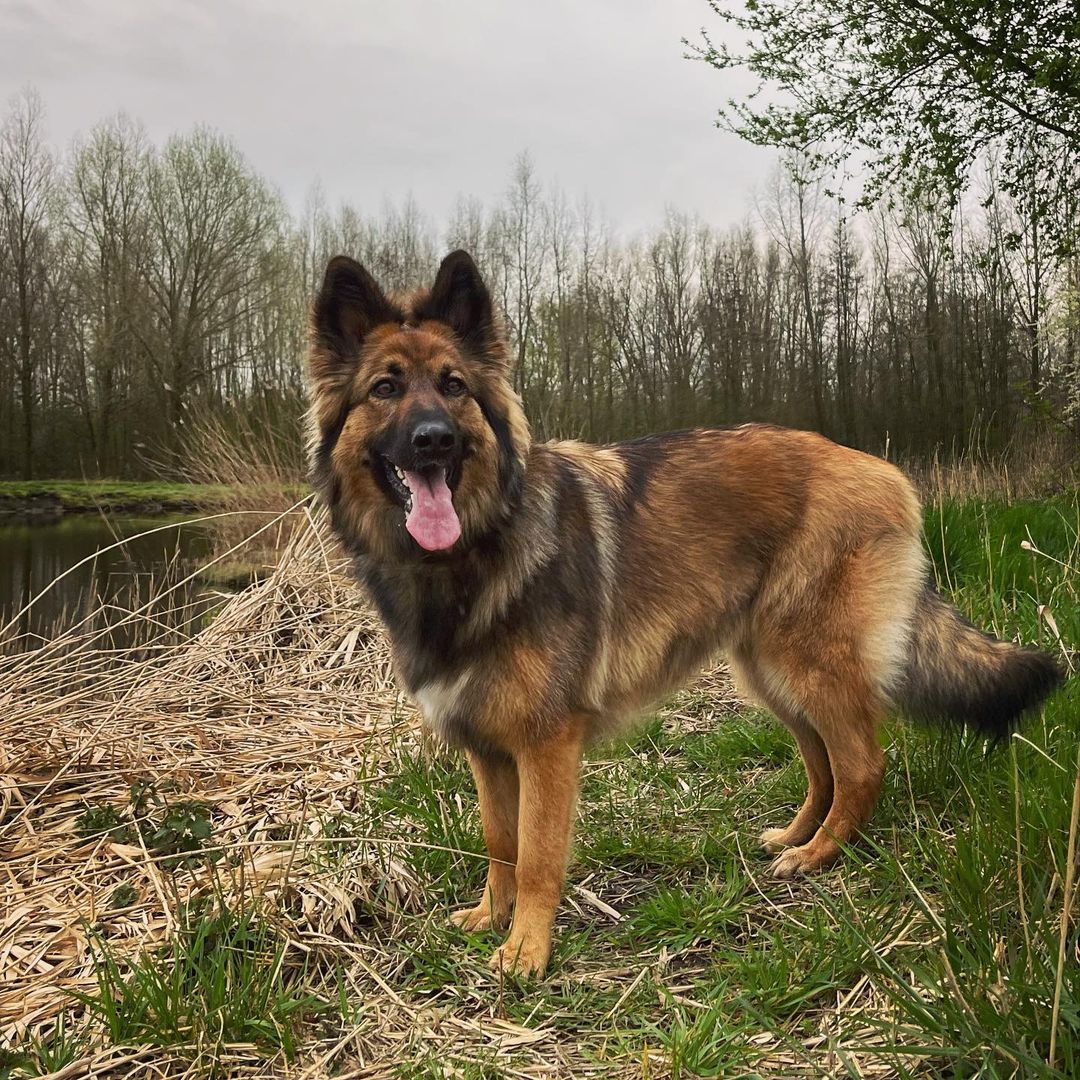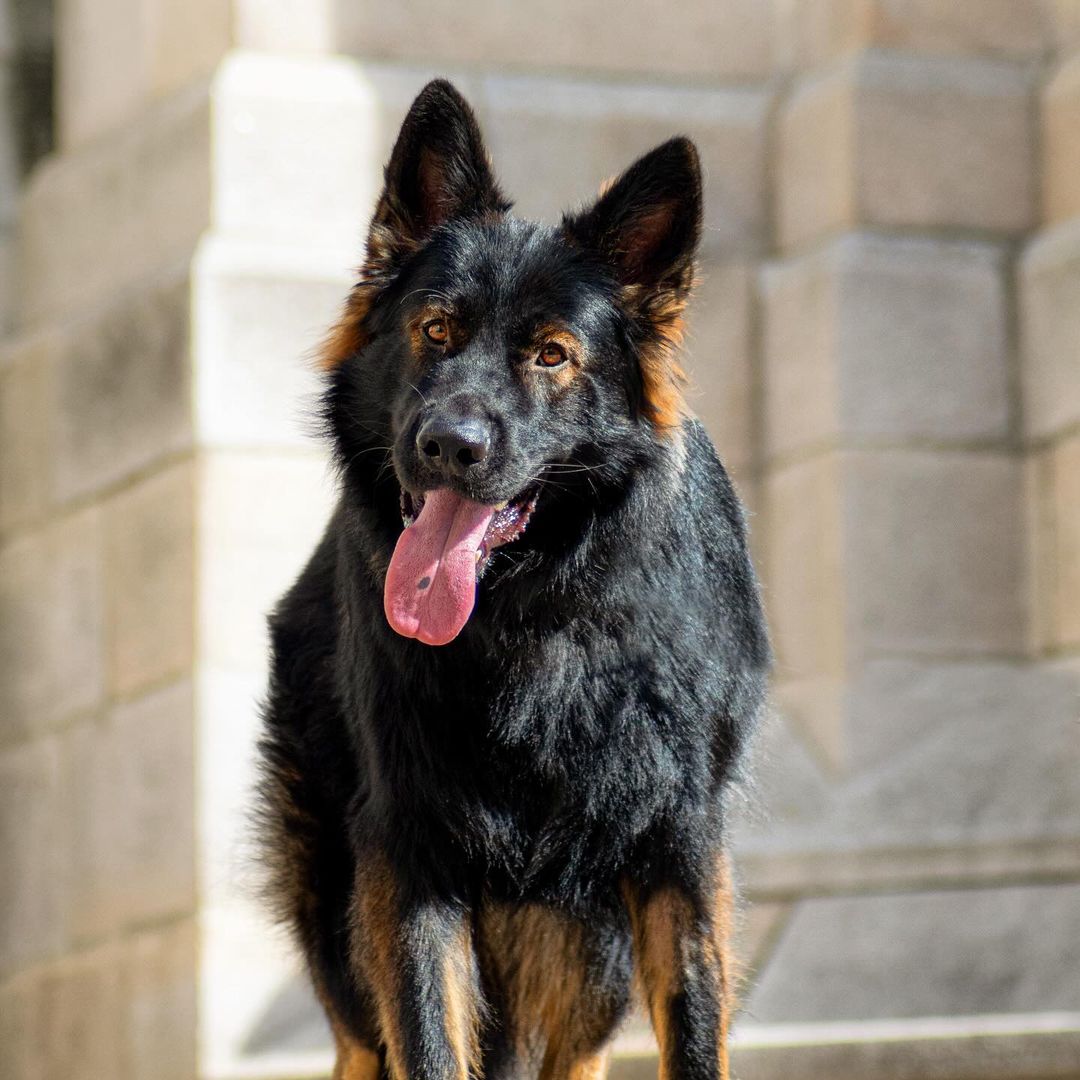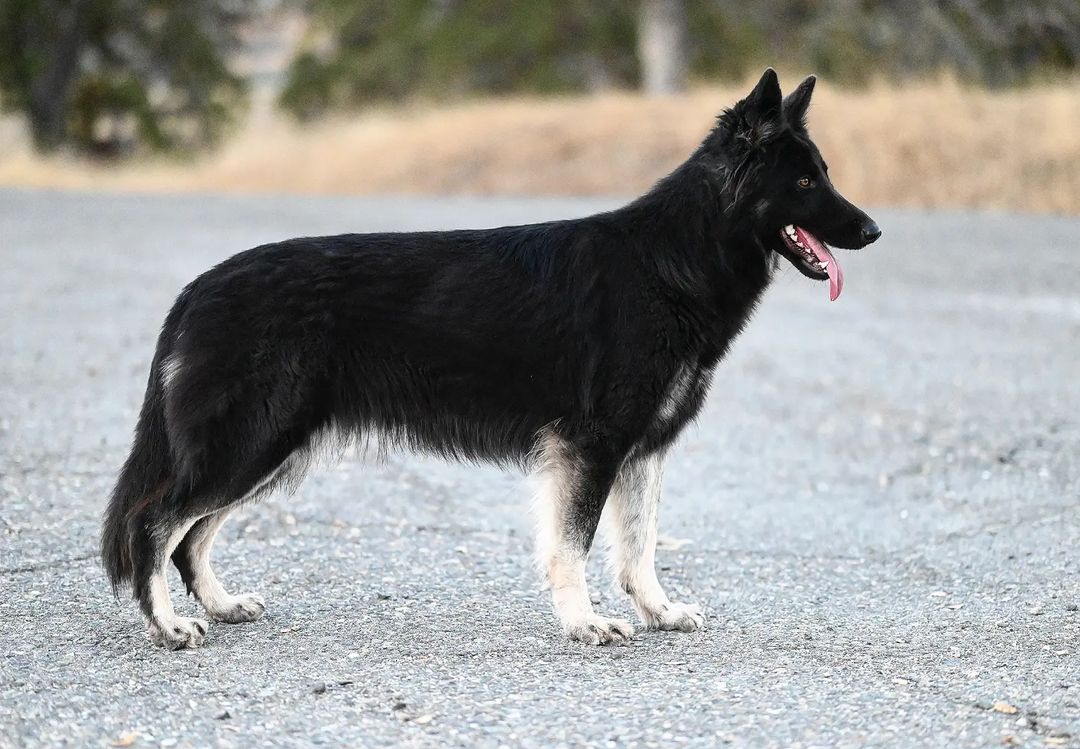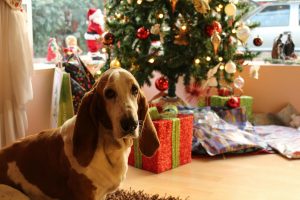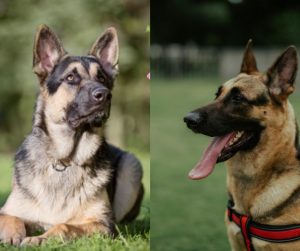The ancestor of the German Shepherd is the Old German Shepherd dog. It seems logical, right? Well, the Old Shepherd is a breed that never participated in the rigid breeding process by Max Von Stephanitz. Max was the one who came up with the development of the common and modern German Shepherd.
Nowadays, the Old version exists on German farms. He has been part of them for hundreds of years. There, he has diligently worked alongside farmers and their flocks.
Now, you might see a close resemblance to the long-haired modern German Shepherd. However, there is a large variation within the breed. There is a great deal of confusion around the breed. Old German Shepherd Dogs are not just elder GSDs. Let’s take a look at the breed and its history.
History of the Breed
The Old German Shepherd Dog is a classification of the German Shepherd breed in its own right. You cannot confuse it with an elder GSD. While it is extremely rare, you can still find it. Some reports claim it is in real danger of extinction in the near future.
One of the reasons why that is happening is the establishment of the German Shepherd breed. Before the GSD breed was established, any dog in Germany used for sheep herding was referred to as a German Shepherd. In the late 19th century, Captain Max Emil Friedrich von Stephanitz formed the Society for the German Shepherd.
The main purpose was to breed and document the dogs, with the goal of establishing a superior pet. The first dog was Hektor Linksrhein, many considering him the original German Shepherd.
After Hektor, any dog appearing in the records was referred to as an official German Shepherd. At the same time, Old German Shepherd dogs remained popular in rural, German farms. They would move flocks of sheep around the lands and act as guard dogs.
The purpose of the German Shepherd was to defend the livestock from potential predators. Before Captain von Stephanitz, these dogs were bred for their working ability, not their aesthetic appearance or conformation.
Because there is no breeding program for their physical looks, there is a huge variety from one breed member to another. You can notice much less uniform in appearance compared to the modern German Shepherd.
There is no breed standard set for the Old German Shepherd dog. The focus is purely on capability, not on physicality. Their ability to herd remained the most important factor.
The Name Confusion
Nowadays, the Old German Shepherd is known as the Working Line German Shepherd. It differs from the modern and competitive German Shepherd line. The main difference the canine has a straighter back and does not have a downward slope and frog-like legs.
Appearance
When The American Kennel Club recognized the German Shepherd, it set a breed standard. Modern GSDs have to adhere to that standard. But the Old German Shepherd puppy does not. These modern dogs differ scarcely from the 19th and 20th-century dogs you could find on German farms.
While there is a certain breed standard for the Old GSD, it focuses mainly on capability. With that in mind, the animal has to be capable of herding sheep and cattle. There is no precise physical appearance.
Yet, it is forbidden to cross-breed these Old GSDs with dogs of other breeds. In 2008, the German Society for the Conservation of Old and Endangered Livestock Breeds listed the Old GSD as “extremely vulnerable to extinction”.
To this day, the dog has never been bred to look a certain way. There is no breed standard in existence. What we can say is it is a dog of medium to large breed, athletically built, measuring between 21 and 26 inches, weighing between 50 and 90 lbs.
The coat color of this separate breed can be brown, black, tan, or grey. Often, it consists of more than one color.
Temperament
You might think that size and appearance is the only difference between the breeds. But the Old GSD is a separate breed, and that is evident in temperament as well.
These dogs have a higher desire to work. They are focused and brave, making them perfect rescue dogs, police dogs, and military working dogs. They excel in high-stress situations.
Here is a fun fact. The military used them in World War I, and they continue to employ them to this day. As a herding dog, the Old GSD has plenty of energy and will try to herd family members.
They are much more intelligent than the modern GSD and can learn complex multi-step tasks. Thanks to their high intelligence, they are widely used for search and rescue missions, drugs, bombs, and much more.
Is The Old GSD A Good Family Dog?
Yes, these dogs can make fantastic pets for a family, be it a large family or a small one. They enjoy playing with children and being part of family activities.
At the same time, they can be fantastic guard dogs that will protect and watch over the family. The downside is they tend to herd family members, sometimes nipping and scaring small children. Yet, with plenty of training and socialization, you can solve that issue.
Do They Get Along With Other Pets?
Yes, German Shepherds in general get along with other animals. If the other animal is part of the family pack, no harm will come to it. In fact, GSDs take it upon themselves to protect all family members, be it other animals or people.
Sometimes, however, they might chase small animals in the yard. But with good socialization, you can turn the Old GSD into a fantastic family dog.
Exercise Needs
While it is a separate breed, the Old GSD has similar exercise needs as the modern GSD. They are of similar size but are a bit more active. It is due to their herding heritage.
Compared to the modern German Shepherd dog, Old GSDs need a bit more physical stimulation, and a lot more mental stimulation. Otherwise, they might get easily bored and develop some destructive habits like barking and chewing.
Generally speaking, this canine needs at least 60 minutes of exercise per day, with 90 minutes being the preferred rule. The more you can provide, the better.
Be careful with younger dogs. Over-exercise while the puppy is still growing can cause harm to the joints.
Training
Old German Shepherd dogs are some of the smartest canines on the planet. They are a breeze to train. Yet, even an easy-to-train breed, it will take a lot of consistency and dedication on your side.
Begin training as early as possible. The best timing is the moment you get your puppy home. Training and socialization in the first year are critical for preventing the development of bad habits. Focus on teaching good behavior and reward it all the time. Even when your dog is calm and sits, reward it.
Health Issues
Here is one thing where the old and the modern German Shepherd dog have similar problems. And that is the health department. Typical diseases that can affect an Old GSD are:
- Hip dysplasia
- Elbow dysplasia
- Polyneuropathy
- Eye diseases
- Degenerative lumbosacral stenosis
- Degenerative myelopathy, or muscle atrophy
- Pancreatic insufficiency
Old German Shepherd Nowadays
There are still lovers of Older German Shepherds. While the breed was excluded from further breeding in the 1930s, some breeders continued to produce dogs.
How did they manage to do it? Well, they organized their own clubs and continued the breeding of longhaired shepherd dogs under the term Altdeutscher Schäferhund. After the re-admission of longhaired dogs in 2010, many breeders continue to hold on to the name Old German Shepherd Dog.
There are even two lines, performance breeding and high breeding. If you want a family dog, we would suggest getting one from the high breeding line, which is beauty breeding.
Dogs from the performance breeding line are better suited for experienced dog handlers. They are intended for missions like military, customs, and police. They need to be trained with expertise, something not all dog owners possess.

